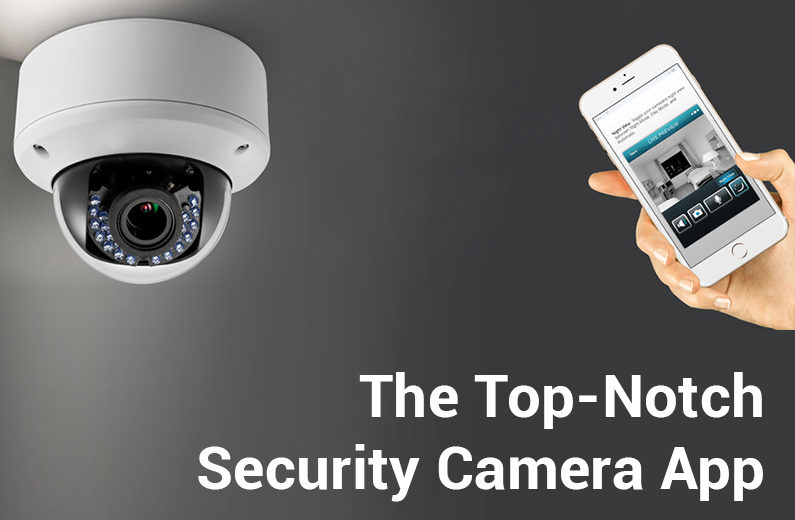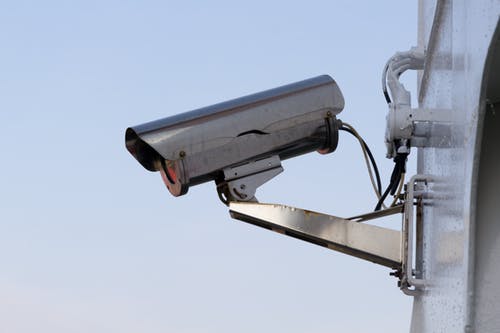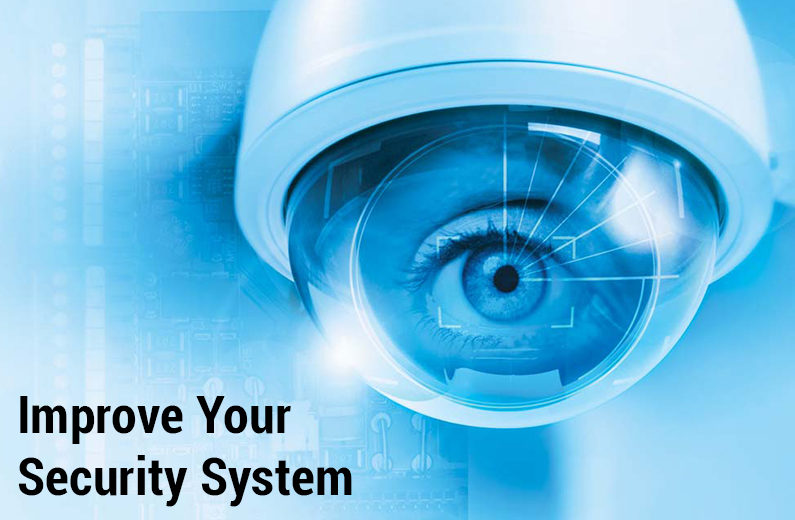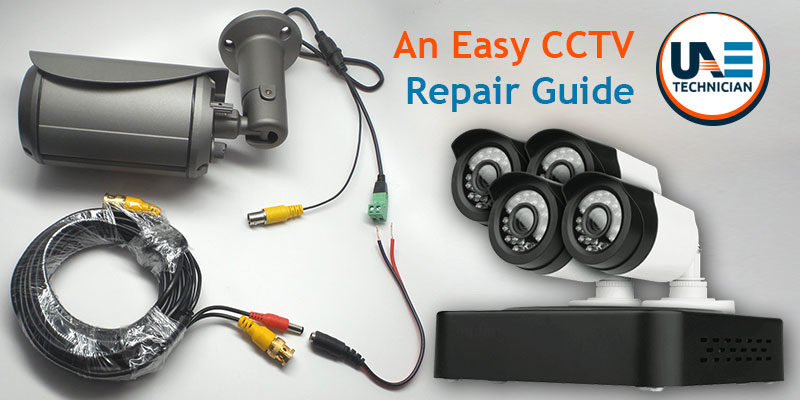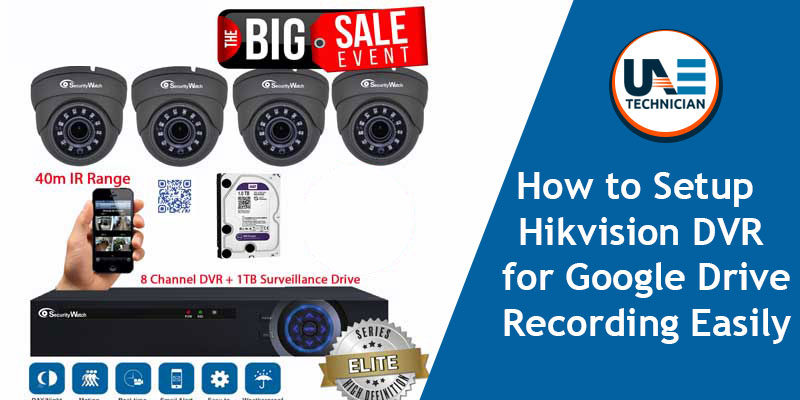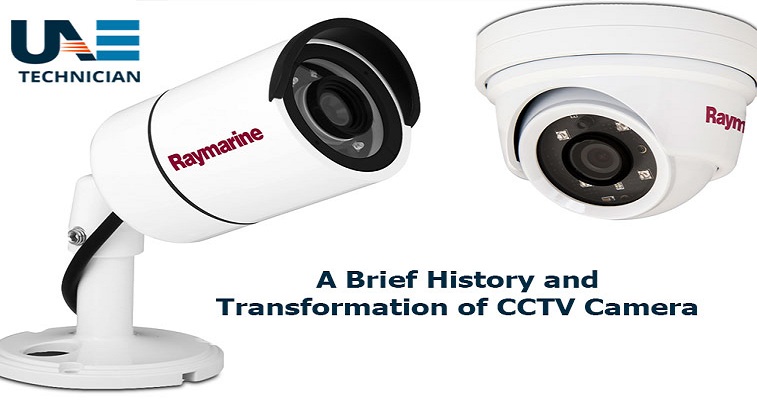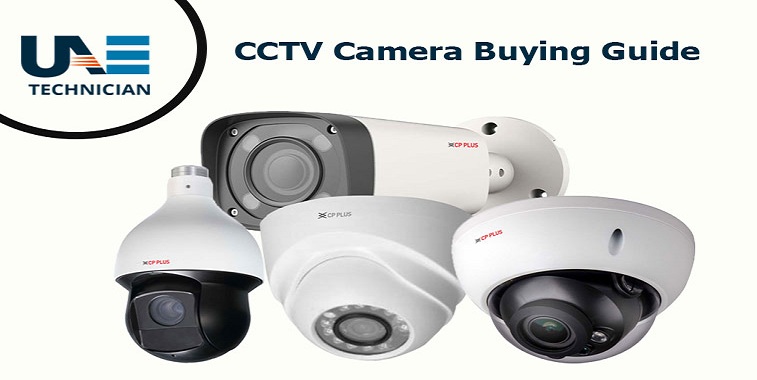Wondering What Does CCTV Stand For? Know How CCTV works to Enhance Your Security System!
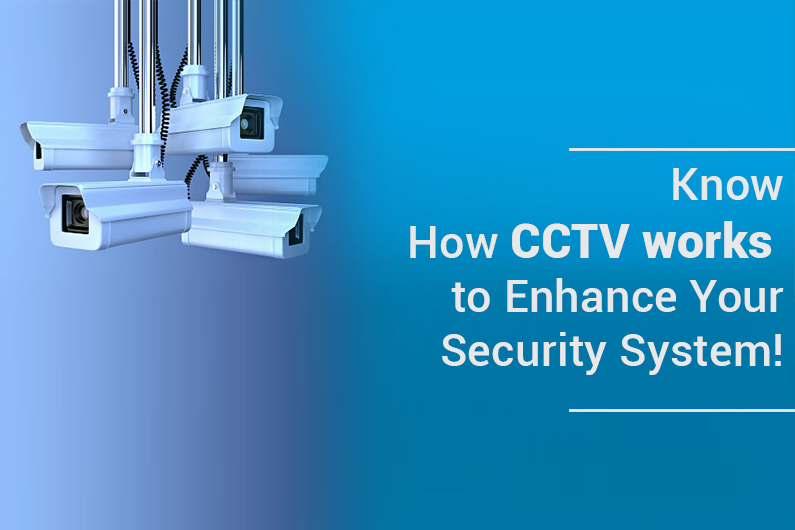
 When you are looking at video surveillance systems, it is likely that you come across the term CCTV. It is such a common term that you will find this in several areas like office, school, parking lots, shops and many more. More often, while entering any corporate or any IT park you will see this warning CCTV Surveillance in use. Also, you can find this even in local coffee shops or banks. But the question that is spinning around your head is “What Does CCTV Stand For?” CCTV is basically a Closed Circuit Television built with the purpose of sending video footage over a single channel with the help of wires feeding into a monitor. This is done with the sole intent of broadcasting publicly so that everyone can see what’s happening around. Recorders are used for communication with the help of wireless connection with no intervention from outside. While most of the video cameras work virtually in the same fashion for recording purposes, the term CCTV is used to signify those camera systems used in a broader sense for the purpose of security monitoring as well as surveillance. They are extensively used for home security, home surveillance, for traffic monitoring, as well as law enforcement purpose. This article will walk you through to the basic features of a CCTV camera as well as its working mechanism which will give you a better guide on “what does CCTV stands for?”.
When you are looking at video surveillance systems, it is likely that you come across the term CCTV. It is such a common term that you will find this in several areas like office, school, parking lots, shops and many more. More often, while entering any corporate or any IT park you will see this warning CCTV Surveillance in use. Also, you can find this even in local coffee shops or banks. But the question that is spinning around your head is “What Does CCTV Stand For?” CCTV is basically a Closed Circuit Television built with the purpose of sending video footage over a single channel with the help of wires feeding into a monitor. This is done with the sole intent of broadcasting publicly so that everyone can see what’s happening around. Recorders are used for communication with the help of wireless connection with no intervention from outside. While most of the video cameras work virtually in the same fashion for recording purposes, the term CCTV is used to signify those camera systems used in a broader sense for the purpose of security monitoring as well as surveillance. They are extensively used for home security, home surveillance, for traffic monitoring, as well as law enforcement purpose. This article will walk you through to the basic features of a CCTV camera as well as its working mechanism which will give you a better guide on “what does CCTV stands for?”.
Know-How Does CCTV Work:
To know the features and functionality of any security camera, at first, you have to know how does a CCTV work. As there are different varieties of CCTV systems, but there is a major difference between analog and IP-based systems. So know them, take a look below:
Analog Systems
The probable question that comes to mind What does CCTV stand for most among the new users. But you should also consider the functionality of the CCTV as well. Analog Systems are more of a traditional one equipped with coaxial cables in order to create a connection between camera and surveillance monitor. Generally, analog CCTV cameras and systems work in a lower resolution than the digital ones. Moreover, it doesn’t perform well in low light and various other situations that can easily be done with digital systems. Besides, it also lacks certain functionalities available in lower systems.
IP-Based Systems
IP-Based Systems basically signifies run-off digital IP and local area networks. These may not be technically CCTV systems like the hardwired analog systems. The process is quite fast and easy. Since most of the businessmen and manufacturers are inclined towards digital systems, IP based systems have become a very popular form of CCTV.
They are capable of recording higher resolution videos which help in providing better clarity. Also, they are equipped with more features than the analog ones like video verification, video analytics, as well as advanced processing in order to perform in low-light recording situations. IP CCTV also allows more flexibility and comes with sturdy systems than the traditional analog cameras. When the network is closed, many of them will permit remote monitoring.
IP cameras can be set independently or can also be integrated with the existing network of the company. But you should take into account data and bandwidth speeds. IP CCTV system uses Cat5E cables while the analog camera uses coaxial cables. Go through the rest of the article to know more about “What CCTV Stands For?”
CCTV Catering Household Purpose:
CCTV safeguards your home too with its best features. It is built with high-grade professional solutions for home surveillance comprising of analog or IP based surveillance networks. The lower cost and user-friendly ones cover home security cameras as well as devices.
Know the Different Kinds Of CCTV Camera
Let’s have a look at different types of CCTV Camera
-
Dark Fighter Technology Cameras
These cameras use colored images in very low-light conditions. You can use dark fighter technology throughout the day to provide optimal performance. They are built with ½” CMOS progressive scan sensors which permit the device to take up superior quality images. However, it doesn’t require any surplus light source for night time security surveillance.
Benefits
- 1. The smart features include audio, line crossing, as well as face detection.
- 2. It can serve a manifold purpose.
- 3. High Resolution
2. ANPR/LPR Cameras
ANPR and LPR cameras are mainly used for reading and storing data on registration plates. They basically offer simple solutions which include tolling, hotel overstay management as well as car parking. ANPR generally stands for Automatic Number Plate Recognition.
Benefits
- 1. Storage of Informations.
- 2. Finding cars banned from the premises.
- 3. Smooth business flow.
3. Internal and External Dome Camera
The dome camera is mostly used for indoor as well as outdoor security surveillance. The shape and the texture of the camera make the observer confuse about the direction of the camera. This is a sturdy design mainly built to identify the criminals.
Benefits
- 1. Easy setup.
- 2. Vandal-resistant features.
- 3. Infra-Red Night Vision.
4. Bullet Camera
This is basically a long and cylindrical camera and is best for outdoor purposes. The major strength lies in the application which covers long-distance visualization. These are basically installed inside the protective casing. It is properly shielded to safeguard from dust, dirt, as well as natural elements. In addition, the cameras can be mounted with the help of a mounting bracket. It comes with fixed or varifocal lenses based on the need of the application.
Benefits
- Infrared night vision.
- Concise size helping in installation.
- Superior quality image resolution.
5. C-mount Camera
The c-mount camera comes with detachable lenses. It has the provision of modifying the simple lenses so that it gets fit into several applications. Moreover, it covers a distance of more than 40 ft, whereas the permissible range for standard camera varies between 35-40 ft.
Benefits
- Support technology change.
- Useful for industrial purposes.
- Because of the bulky size, this is noticeable.
6. Day-Night Camera
This is compatible in both normal as well as poorly lit environment. It does not gain benefit from infrared illuminators. They can capture images even in darkness. Owing to this fact, these cameras are perfect for outdoor surveillance applications where IR cameras cannot function properly.
Benefits
- It can record black and white as well as color images.
- Available in a wide range of sizes.
- Infrared capability.
7. PTZ Pan Tilt and Zoom Camera
It helps the camera to move up and down, left and right and also there is provision for zooming the lens. It can be used in certain situations where you can find a lifeguard or surveillance specialist involved in the operation of security systems.
Benefits
- Helps in zooming IR night vision.
- X36 Optical zoom features are available.
- Superior quality resolution.
8. Discreet CCTV
These cameras are involved in a discreet placement which suggests that you can take good CCTV footage of and other criminal offenses. Discreet CCTV cameras are beneficial since criminals can’t identify them and are subjected to less damage.
Benefits
- It can be mounted up.
- This can be distinguishable in various subjects.
- Beneficial for indoor activities.
9. Thermal Image Cameras
This is best used for 24 hours of surveillance. As a result, this is very common in airports, seaports, as well as in many critical infrastructures that require superior quality images. It is not a matter of concern what time of day is it. Infrared cameras are built with small LEDs covering the lens in order to catch hold of the moving figures in the pitch black. Thermal image cameras can be used for viewing long-distance beyond 300 meters.
Benefits
- It helps in identifying the intruders in a range of 250-300 meters.
- Works well in low light.
- Moreover, thermal radiations penetrate the visual barrier.
10. Varifocal Camera
It has the ability to zoom without penalizing the focus. Moreover, it helps you to modify the focal length, the angle and the increase or decrease of zoom. It is best for getting footage in a square room where you can find a dead zone generally using any fixed lens camera.
Benefits
- Used to capture dead zones
- It provides an awesome focus.
- Very good for close and long distances.
11. Network Cameras
These cameras help in sharing the images across the entire network coverage. As a result, you can easily access to the CCTV footage. Network Cameras are perfect for both commercials as well as domestic purposes since you will get a fair idea of what is going on when you are out of the station.
Benefits
- You can easily access the data.
- Perfect for both home as well as companies.
- It requires less cabling as well as maintenance.
12. High Definition Cameras
Due to the high resolution, these cameras can be installed in high profile places like banks and casinos. It captures good images of any people who enters and exits in order to provide high security as well as safety. Apart from this, it also helps in determining misconduct and permits the users to zoom in order to get extra clarity. Footage has to be produced in court as and when required.
Benefits
- Clear pictures.
- It gives the best safety for the high-class property.
- Has the ability to zoom without losing the focus.
Now you have a profound idea about What Does CCTV Stand For? Go through the rest of the article to have a thorough idea.
What Type Of CCTV Camera Should You Purchase?
It is of utmost importance to understand which CCTV camera you wish to choose. Depending on their position as well as the use, you need to identify which one serves you the best. Since you have understood till now What Does CCTV Stand For? Let’s burst into some of the factors you need to consider before purchasing a CCTV camera.
3 Factors You Should Consider
Correct Lens
This will make sure that you are receiving a good quality image. Selecting the right lens will help your camera to focus and will fetch sufficient light to the sensor helping you to go through the registration plates and find out the known faces. More details will help you since you can see what is going on exactly and have a profound idea on film. With the help of the zoom lens, customers will get more information since the optical zoom can change the light intensity as soon as it reaches the sensor. This enables flexibility and generates enhanced pictures.
Correct Sensor
The two things you need to consider while choosing the right sensor i.e type and size.
- CMOS ( complementary metal-oxide-semiconductor)
- CCD ( charged coupled device) cameras
CCD is much costlier than CMOS and generates a clearer image perfect for pinpointing faces as well as registration plates.
Correct Output Resolution
The more the pixel, the better will be the quality of the picture. Henceforth, it is imperative to match a resolution that your camera produces. More than the required amount is totally unnecessary. As a result, after knowing What Does CCTV Camera Stand For you should take into account the above factors before purchasing CCTV cameras.
Factors Required To Consider When Buying a CCTV Camera
- Type of CCTV camera you are purchasing.
- Get to know which one you should for the indoors and which one for the outdoors.
- Light Conditions
- Importance Of Image Clarity.
- Audio Required
How Will You Understand What to Use for Indoors and Outdoors?
When you are thinking about where to place the camera, you should understand how they will be mounted and housed. This is done to make sure that they are in the location is ideal and properly covered. Suppose, if you wish to place your camera outside your house, it should be sturdy and weather-proof. Again, if you are thinking that it should be placed inside your house, make sure it is not in the vicinity of the kitchen to avoid steam or grease. Now you are well acquainted with all the features pertaining to What CCTV Stand For?
Image Clarity Important or Not?
Depending on the place value that means the area coverage, the resolution of the CCTV camera you select must coincide with the landscape to give a clear image. Although, if it is placed in a small room, the camera should have a high resolution.
Audio Required?
Normally audio is not required. If you want audio features there are some systems where you can talk to a person who has broken the property. Audio helps in deterring criminals.
Bottom Line
Hopefully, this article will give you a thorough insight into all the features pertaining to What Does CCTV Stand For? By following the above guide you will get to know all the features of CCTV along with the major benefits and types. Moreover, you can refer to the user manual for any urgent issues.
F.A.Q’s
- What is the Full Form Of CCTV?
The full form of CCTV is Closed Circuit Television. It is the system which comprises of elements such as camera, recording devices, monitors directly connected. The signals are not properly distributed in a CCTV system. However, they are monitored to meet the surveillance as well as the security requirements.
- How does CCTV system work?
A CCTV is built with four major components namely a camera, lens, videotape as well as monitors. Among these, the camera is the most important one since this is the one which collects the images. The mechanism is similar to the normal camera. The difference is that it is self-operated.
- What are the benefits of CCTV?
CCTV systems are widely used across the globe and considered to be one of the beneficial security components. The main benefits cover crime detection, effective surveillance, and if a situation comes it can act as a major source of forensic data.
- Why CCTV is used?
CCTV helps in recording images of people in several public places like town centers, airports, roads, and public transport. It can act as important evidence in court.
- What is Full Form Security?
Security mainly implies all the measures that are taken in order to safeguard a place or to make sure that only authorized personnel can enter or leave the place. Strict measures are taken in the capital cities of different countries to curb criminal activities.
